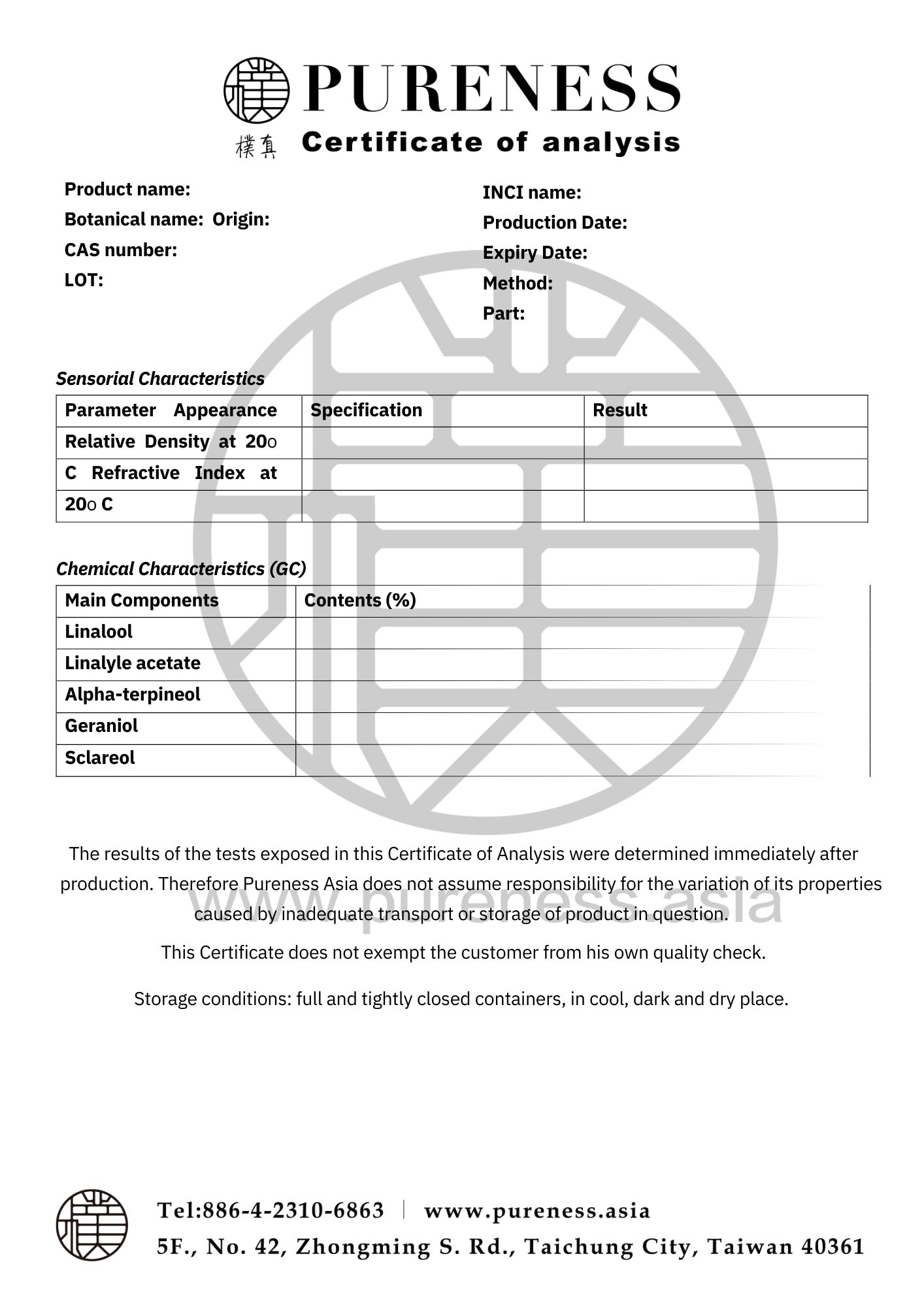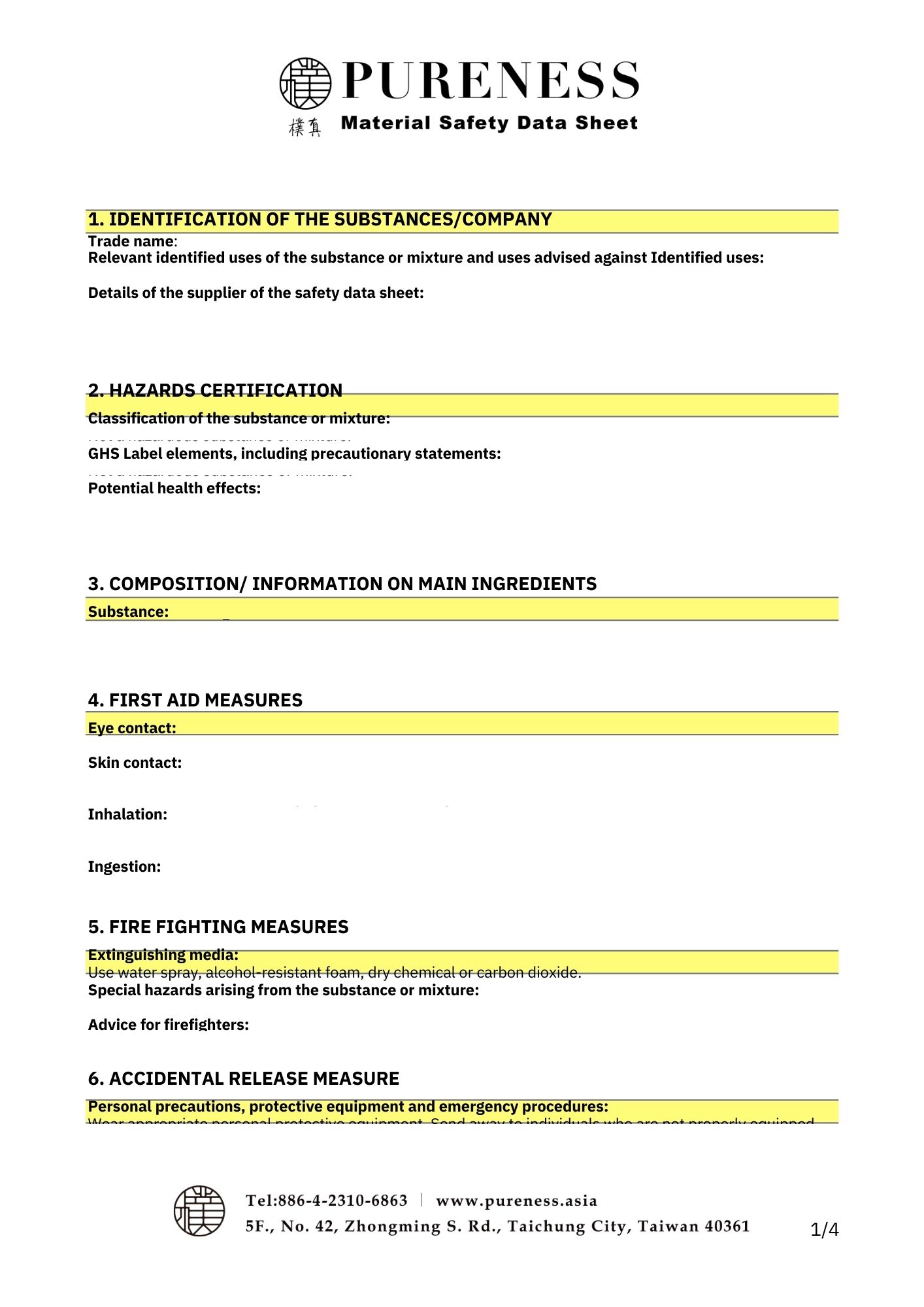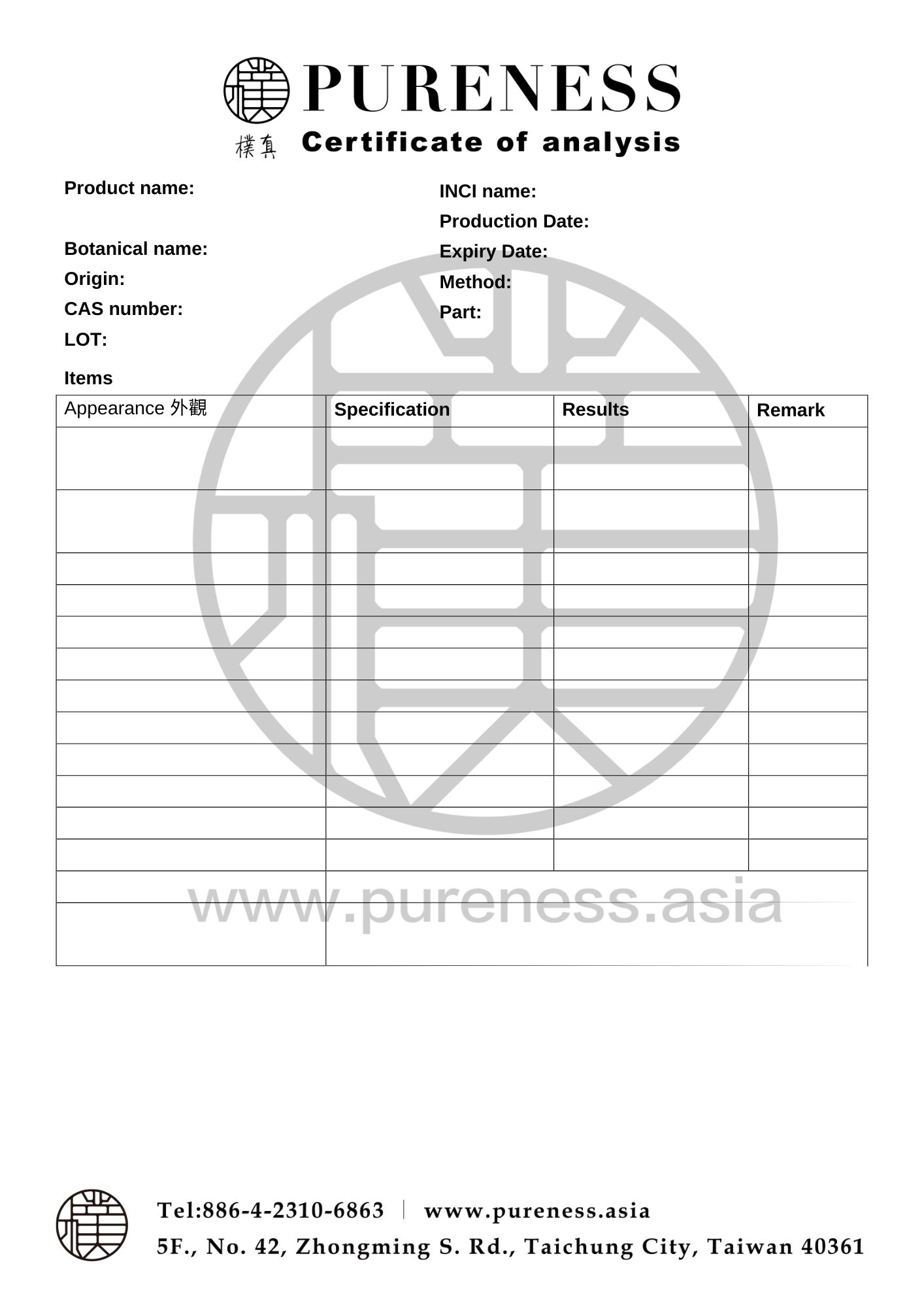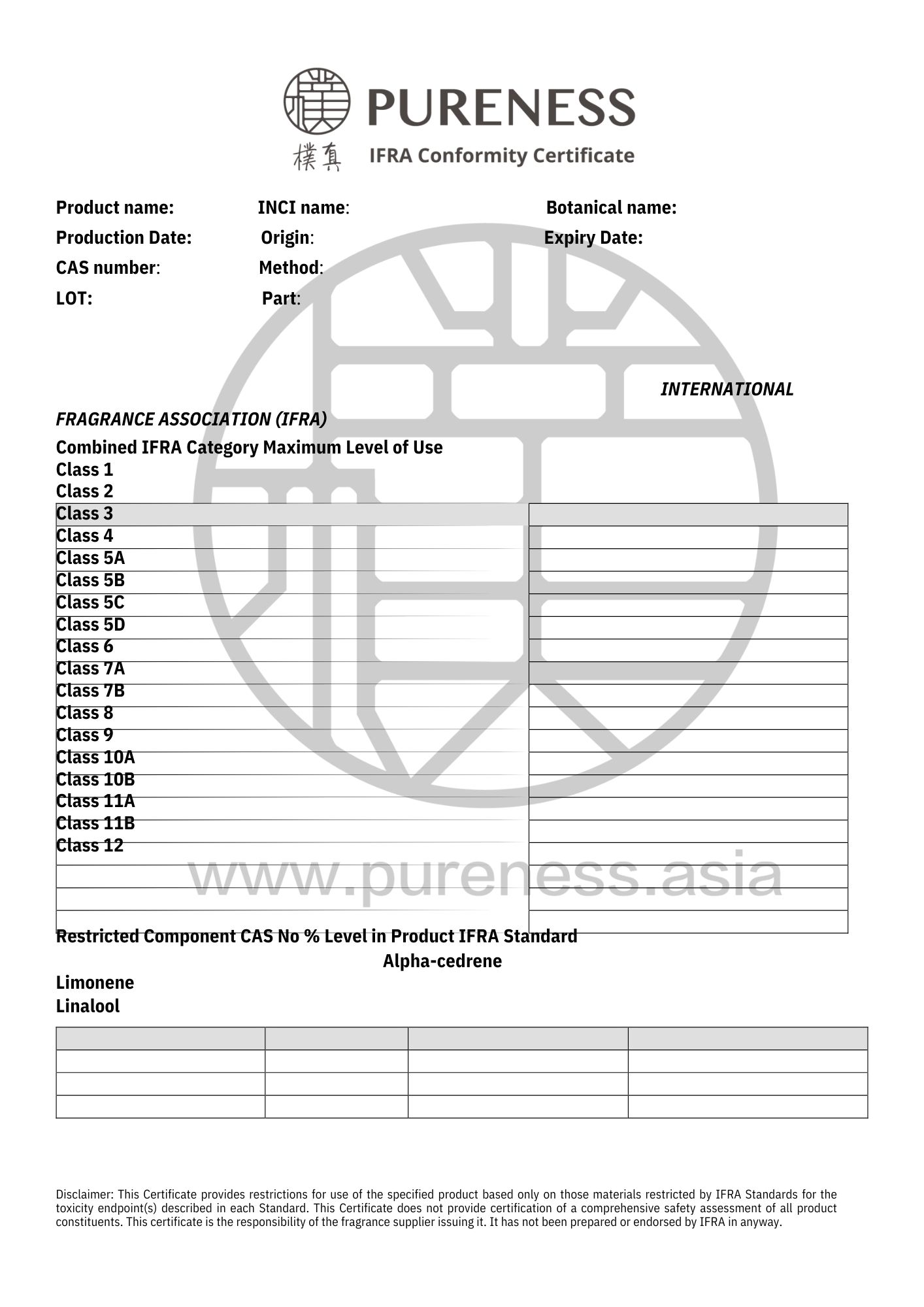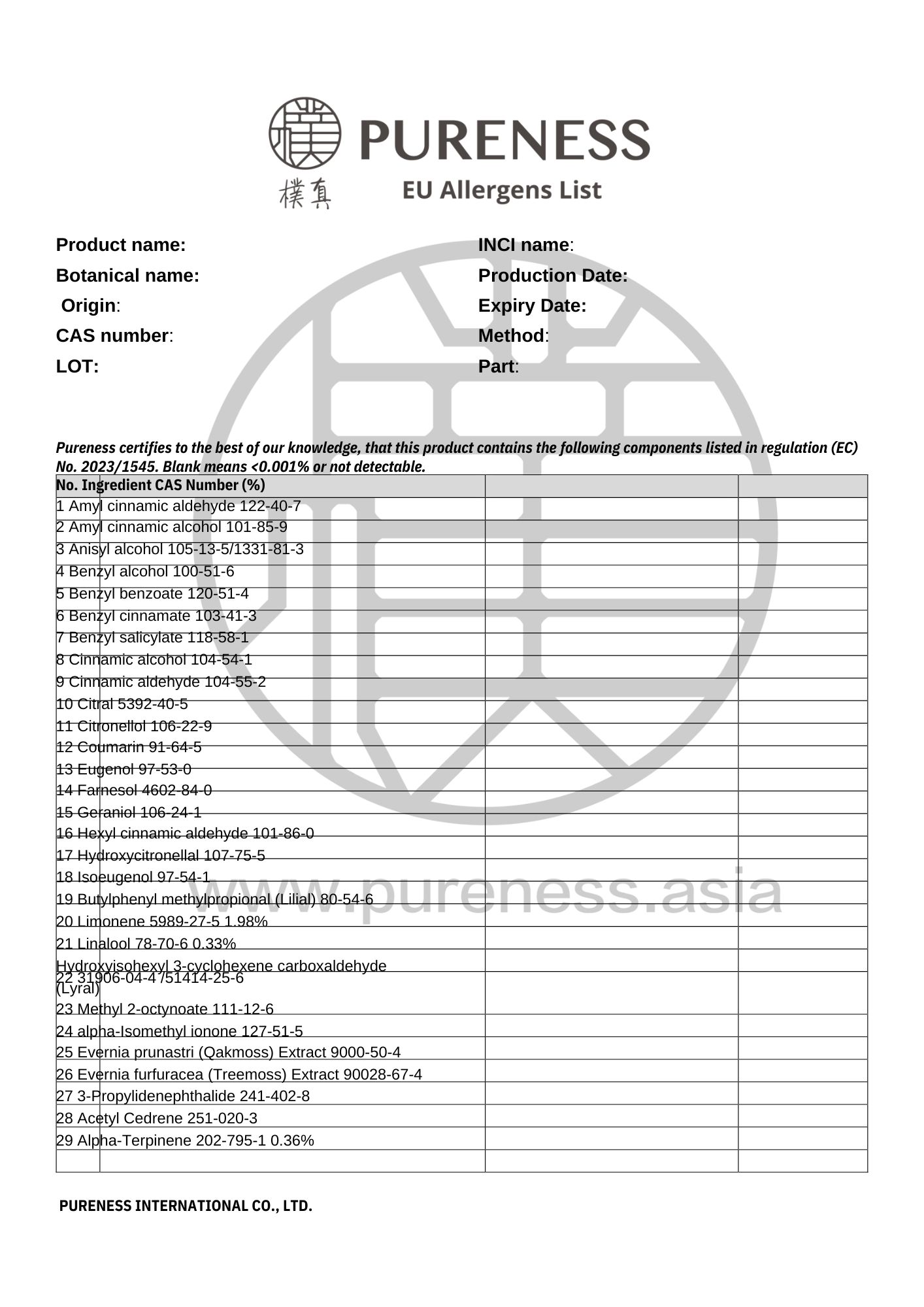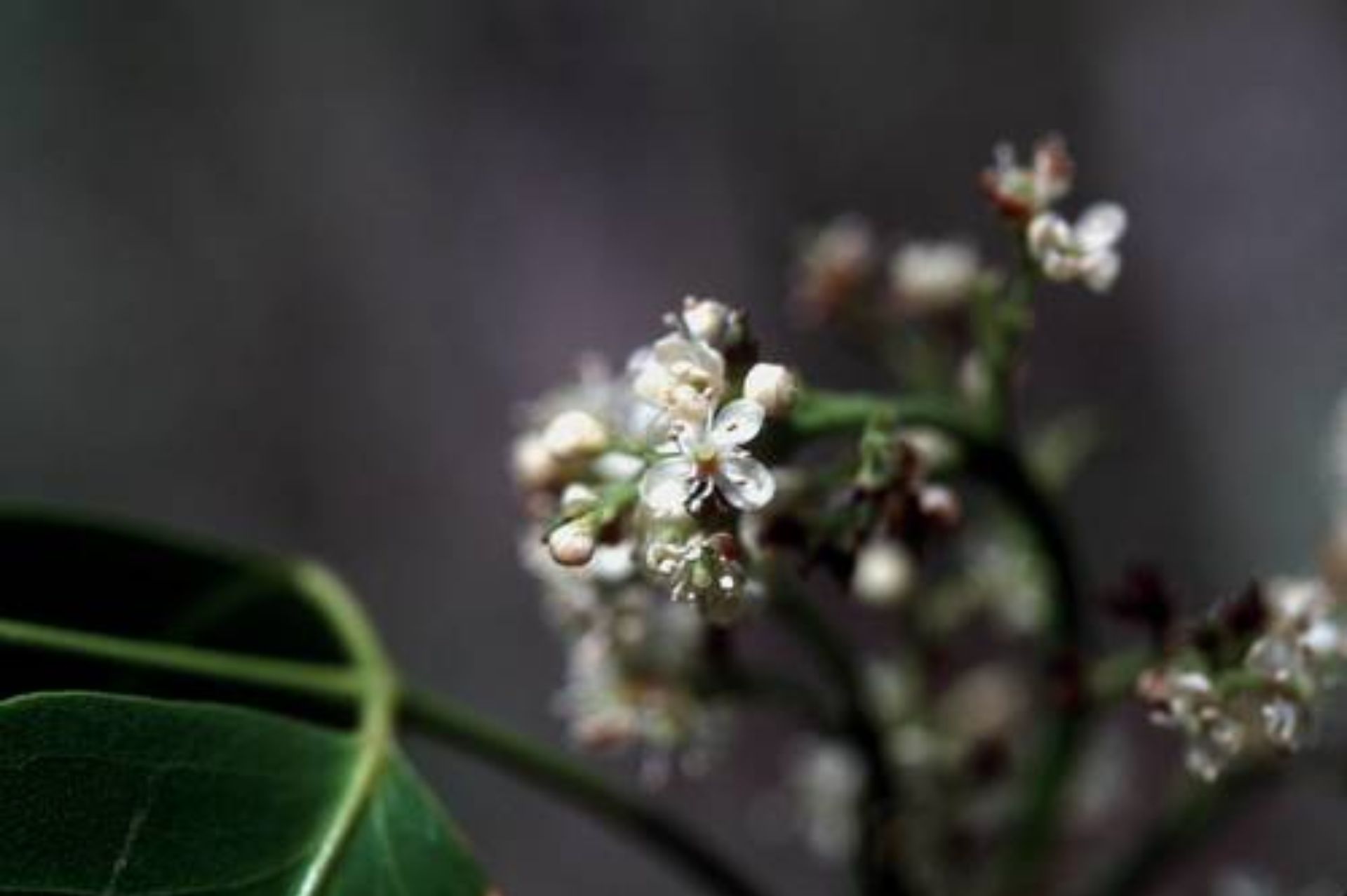
Amyris
Scientific name|Amyris balsamifera
Origin|Haiti
Classification|Wood series
Specifications|500g-25kg Please contact sales for details
Extraction part|Wood
Extraction method | Distillation
Plant family|Rutaceae
Aroma|A woody scent with a touch of peppery balsam
▎Essential Oil Introduction
Amyris (also known as West Indian Sandalwood) is a small aromatic tree in the Rutaceae family, characterized by its white to grayish bark and high oil content. The tree grows to about 2 to 4 meters tall and produces numerous white flowers during the summer. It primarily grows in tropical regions, including the Caribbean in South America and Central America. Locally, fishermen and farmers use the wood for making candles and torches because its high oil content, up to 60%, allows it to burn for a long time. It is also used in charcoal production and as a sturdy material for bamboo trellises.
For general users, East Indian sandalwood is quite expensive. In this case, Amyris essential oil (also known as West Indian sandalwood oil) offers a similar scent with its warm, deep woody aroma and serves as an alternative. Before World War II, large quantities of Amyris wood were shipped from Venezuela, Haiti, and Jamaica to Germany for distillation, producing an oil similar to genuine Indian sandalwood. It is common for sandalwood oil on the market to be mixed with Amyris oil.
Amyris essential oil is primarily used as a fixative in perfumes and is also a component in cosmetics. The quality of the wood depends on the tree’s age and moisture content. If the wood is cut too finely, the amount of oil extracted will be reduced. Amyris oil is known for its relaxing, stress-relieving, soothing, and calming effects.
▎Component Analysis
|Main component: Sesquispirol
The main components are amyrin, valerenol, olibanol, with trace amounts of delta-Cadinene and caryophyllene.
|Research Validation
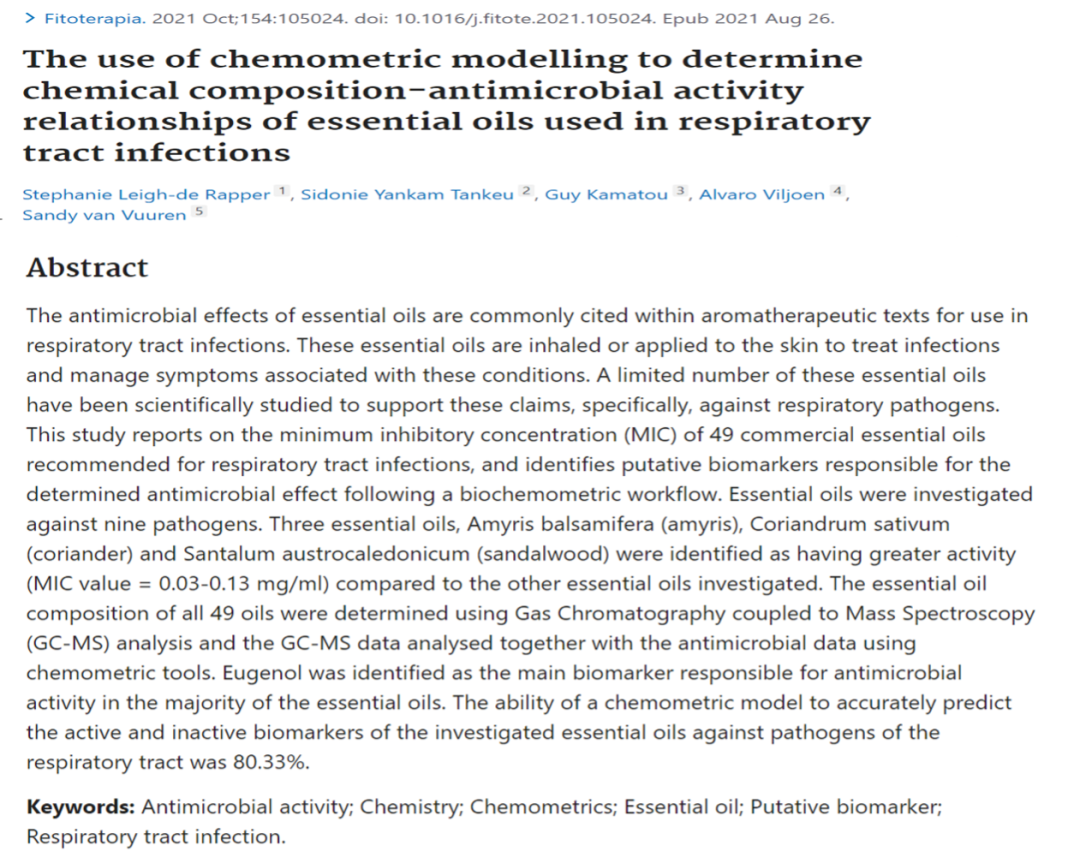
▸ Using chemometric models to study the chemical components of essential oils for respiratory infections, including three essential oils: Amyris balsamifera (Amyris), Coriandrum sativum (Coriander), and Santalum austrocaledonicum (Sandalwood).
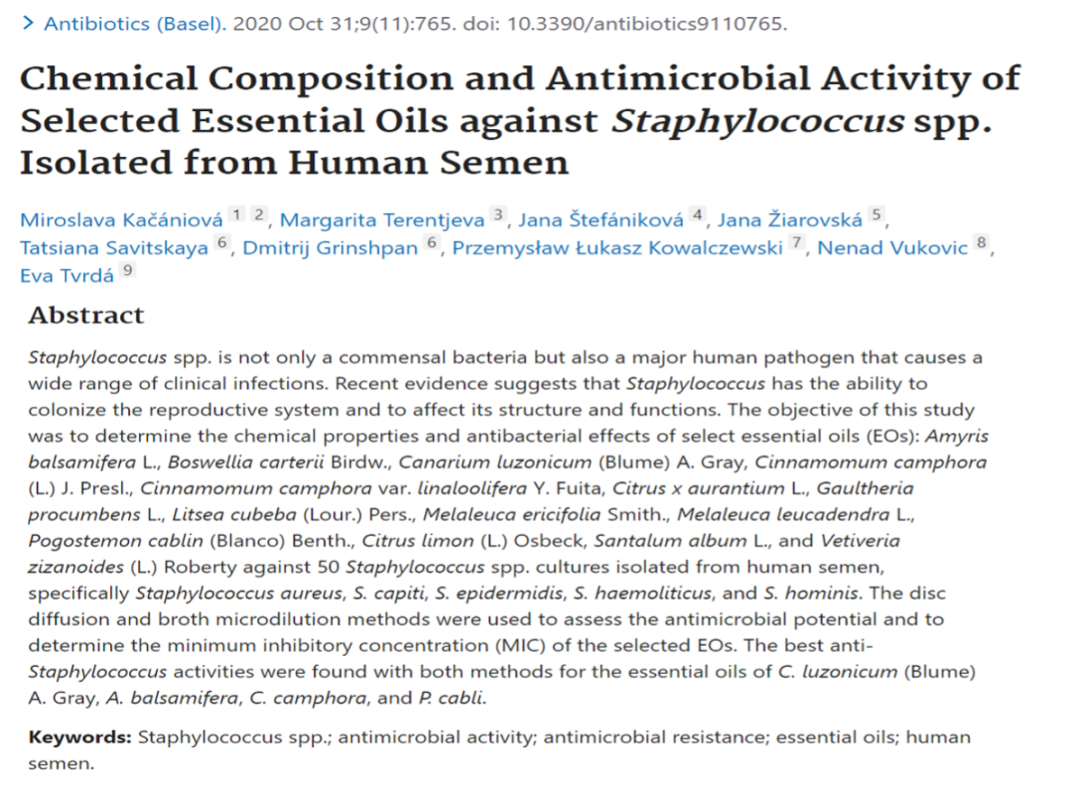
▸ Research on the activity of Amyris essential oil against Staphylococcus aureus.
|East Indian Sandalwood vs. West Indian Sandalwood
| East Indian Sandalwood | West Indian Sandalwood | |
|---|---|---|
| Latin name | Santalum album | Amyris balsamifera |
| Family | Santalaceae | Rutaceae |
| Origin | India, Sri Lanka, Indonesia, Philippines, Australia | Haiti, jamaica |
| Aroma | Warm woody aroma | Woody scent with a hint of peppery, spicy balsam |
| Components | α-Santalol、β-Santalol | Valerenol and Olibanol |
| Price | High | More affordable |
|Raw Material Certifications
To obtain relevant certification information, please contact us on WhatsApp.
▎References
- plant pictures Copyright © 2014-2023 Pl@ntNet™
- Kucharska M, et al. A Comparison of the Composition of Selected Commercial Sandalwood Oils with the International Standard. Molecules. 2021. Apr 13;26(8):2249.
- Rapper SL, et al. The use of chemometric modelling to determine chemical composition-antimicrobial activity relationships of essential oils used in respiratory tract infections. Fitoterapia. 2021. Oct;154:105024.
- Kačániová M, et al. Chemical Composition and Antimicrobial Activity of Selected Essential Oils against Staphylococcus spp. Isolated from Human Semen. Antibiotics (Basel). 2020. Oct 31;9(11):765.
- O'Neal ST, et al. Vapor delivery of plant essential oils alters pyrethroid efficacy and detoxification enzyme activity in mosquitoes. Pestic Biochem Physiol. 2019. Jun;157:88-98.
- Feng J, et al. Identification of Essential Oils with Strong Activity against Stationary Phase Borrelia burgdorferi. Antibiotics (Basel). 2018. Oct 16;7(4):89.
- Carroll JF, et al. Elemol and amyris oil repel the ticks Ixodes scapularis and Amblyomma americanum (Acari: Ixodidae) in laboratory bioassays. Exp Appl Acarol. 2010. Aug;51(4):383-92.
- Paluch G, et al. Quantitative structure-activity relationship of botanical sesquiterpenes: spatial and contact repellency to the yellow fever mosquito, Aedes aegypti. J Agric Food Chem. 2009. Aug 26;57(16):7618-25.
- Howes MJ, et al. Evaluation of the quality of sandalwood essential oils by gas chromatography-mass spectrometry. J Chromatogr A. 2004. Mar 5;1028(2):307-12.
|Some images sourced from the internet. Contact for copyright removal|
